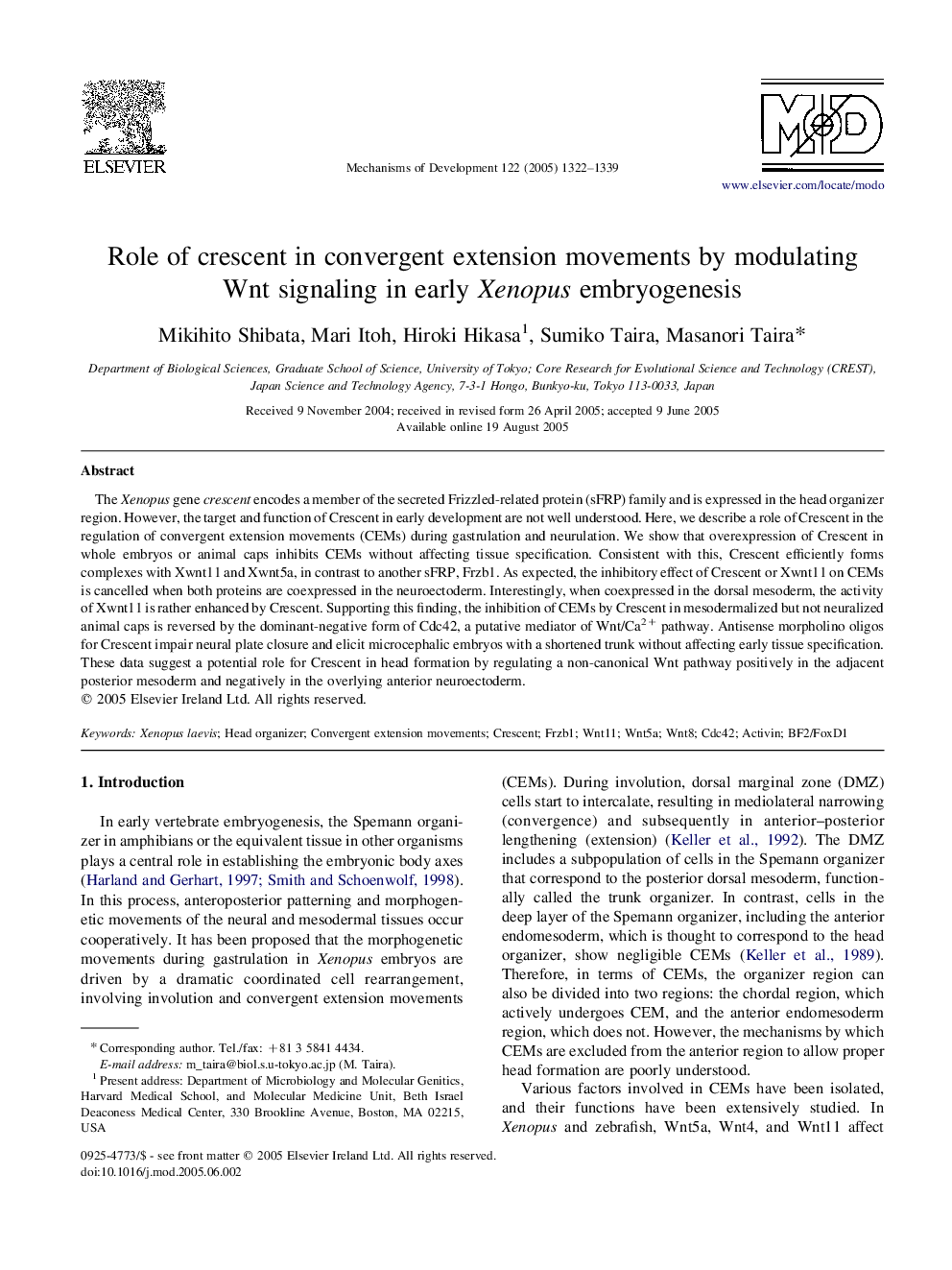| Article ID | Journal | Published Year | Pages | File Type |
|---|---|---|---|---|
| 9913586 | Mechanisms of Development | 2005 | 18 Pages |
Abstract
The Xenopus gene crescent encodes a member of the secreted Frizzled-related protein (sFRP) family and is expressed in the head organizer region. However, the target and function of Crescent in early development are not well understood. Here, we describe a role of Crescent in the regulation of convergent extension movements (CEMs) during gastrulation and neurulation. We show that overexpression of Crescent in whole embryos or animal caps inhibits CEMs without affecting tissue specification. Consistent with this, Crescent efficiently forms complexes with Xwnt11 and Xwnt5a, in contrast to another sFRP, Frzb1. As expected, the inhibitory effect of Crescent or Xwnt11 on CEMs is cancelled when both proteins are coexpressed in the neuroectoderm. Interestingly, when coexpressed in the dorsal mesoderm, the activity of Xwnt11 is rather enhanced by Crescent. Supporting this finding, the inhibition of CEMs by Crescent in mesodermalized but not neuralized animal caps is reversed by the dominant-negative form of Cdc42, a putative mediator of Wnt/Ca2+ pathway. Antisense morpholino oligos for Crescent impair neural plate closure and elicit microcephalic embryos with a shortened trunk without affecting early tissue specification. These data suggest a potential role for Crescent in head formation by regulating a non-canonical Wnt pathway positively in the adjacent posterior mesoderm and negatively in the overlying anterior neuroectoderm.
Related Topics
Life Sciences
Biochemistry, Genetics and Molecular Biology
Cell Biology
Authors
Mikihito Shibata, Mari Itoh, Hiroki Hikasa, Sumiko Taira, Masanori Taira,
